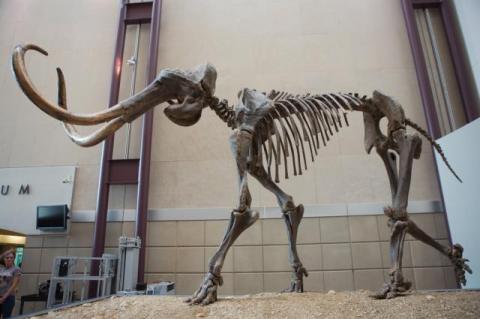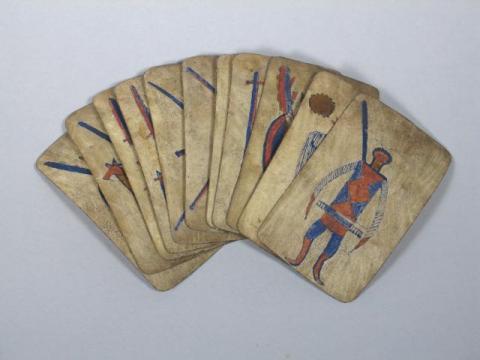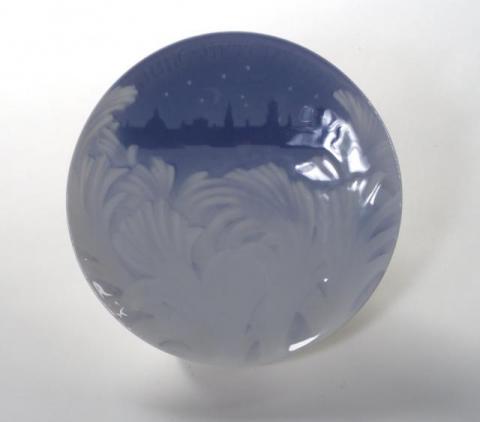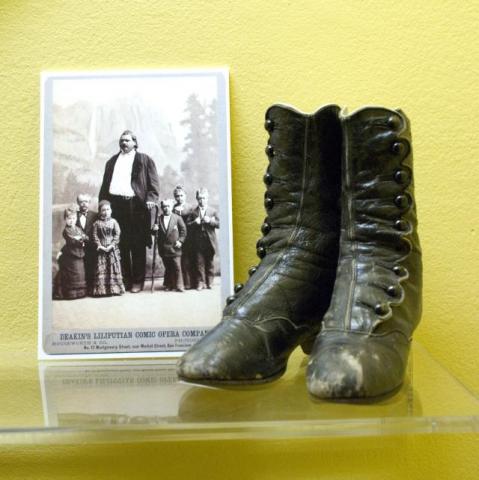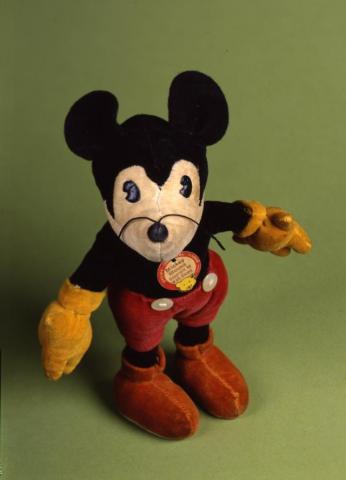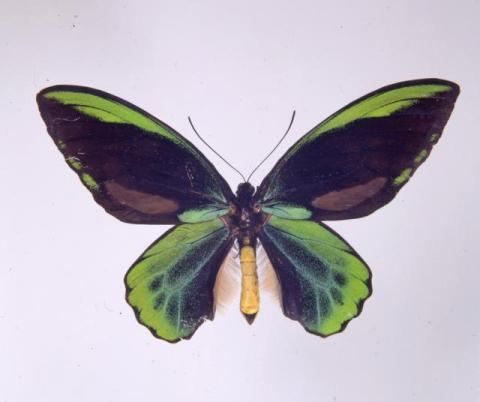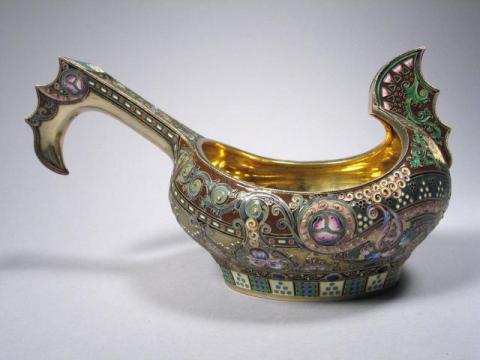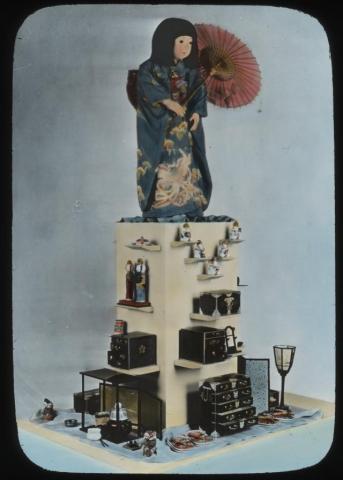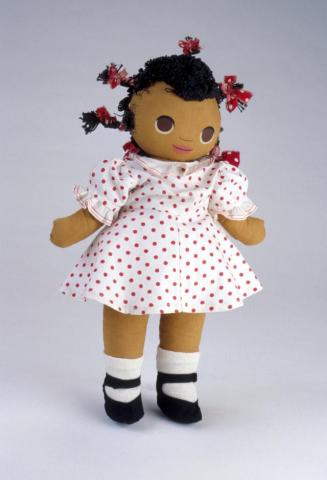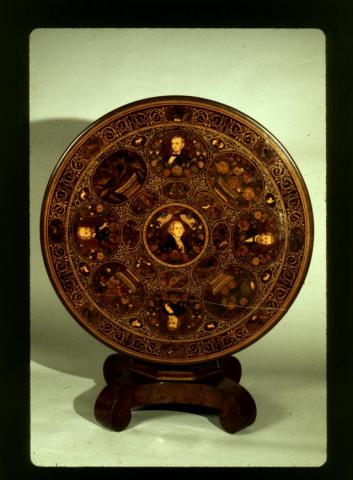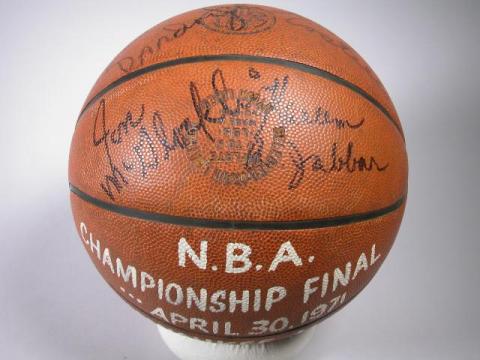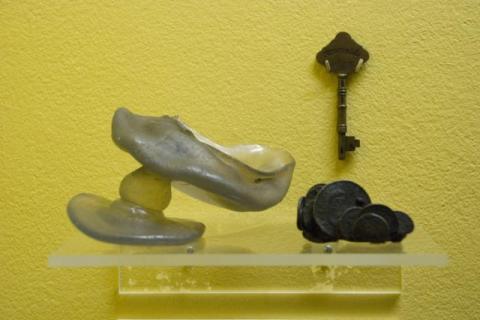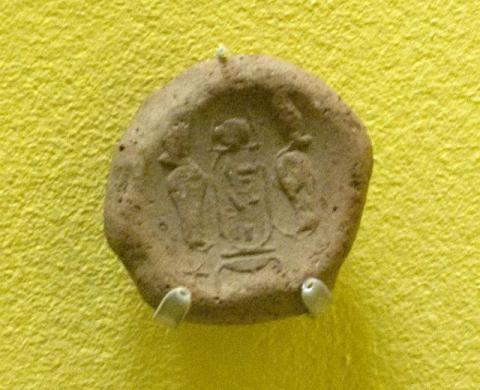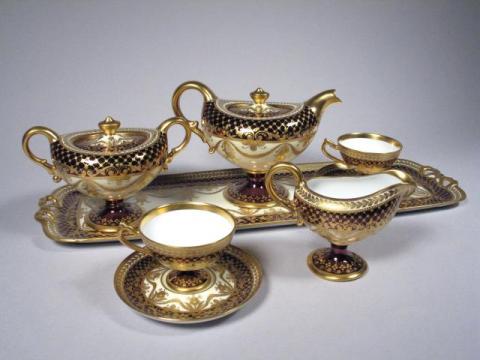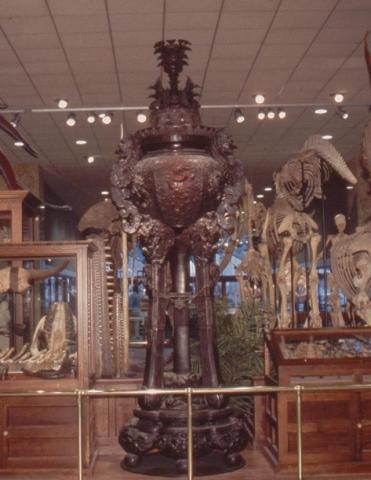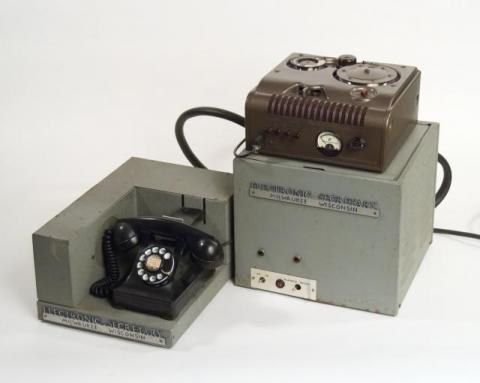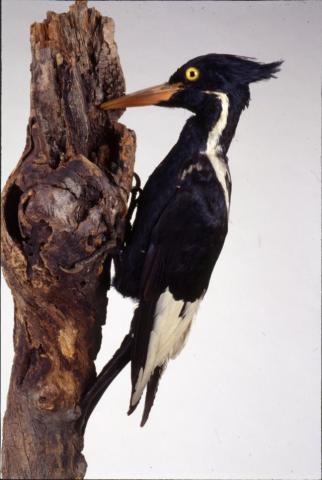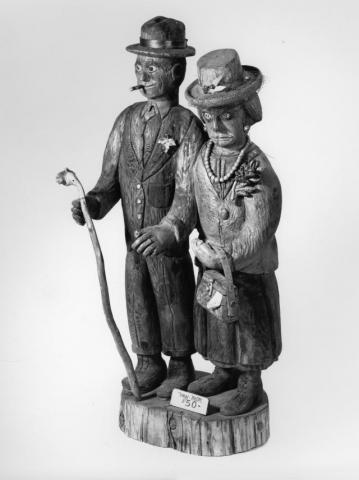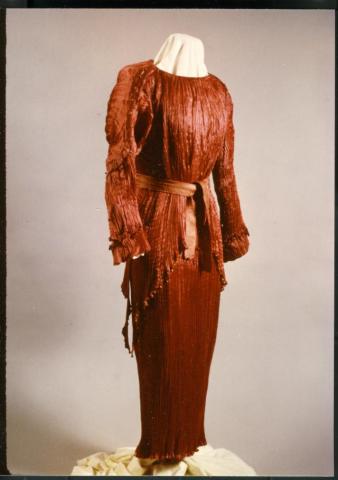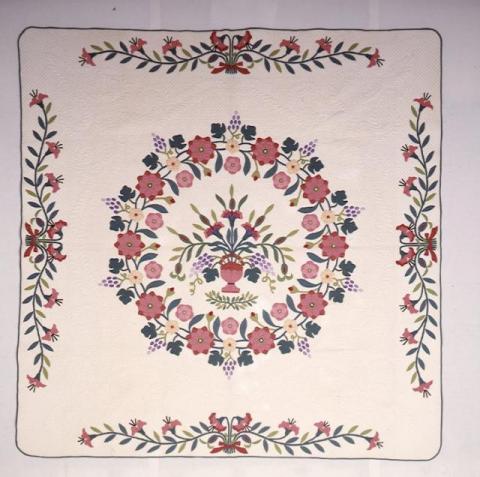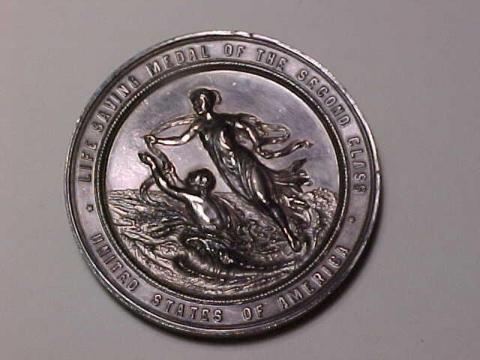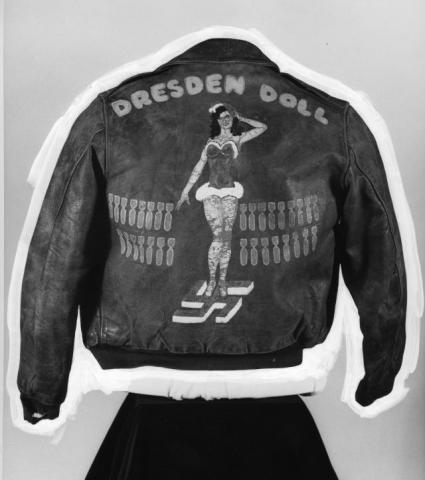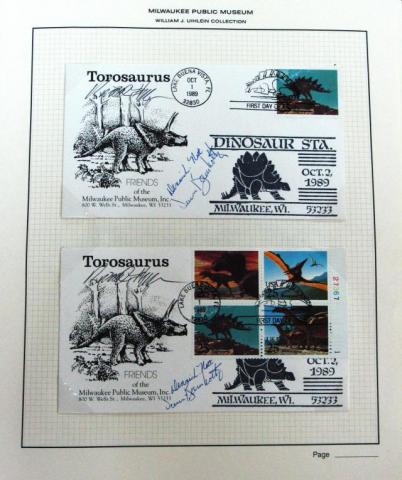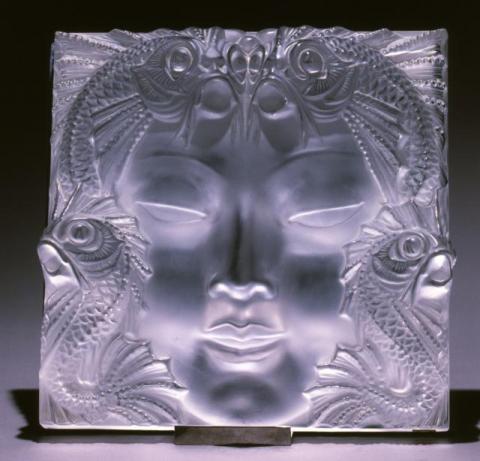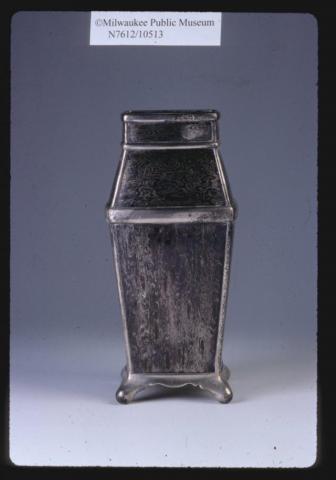MPM's curatorial and collections staff have selected more than 100 important, unique or interesting objects to highlight from the more than 4 million items in the Museum's care. These items reflect the depth and breadth of the collections.
Many of the items featured below are not on exhibit due to their fragile nature. One of the Museum's primary goals is to preserve objects for generations to come.
As a virtual exhibit, we can share with people around the world our most rare and intriguing items without harm to them.
The Hebior Mammoth is the most complete mammoth ever found in North America, with 85% of the bones recovered. Excavated in Kenosha County in the mid-1990s on the farm of John Hebior, the mammoth, found with stone tools and butchering marks, has been radiocarbon dated to about 14,500 years ago. The Hebior Mammoth is one of the earliest pieces of evidence of human occupation in North America, predating the Clovis culture by more than a thousand years. The Milwaukee Public Museum purchased the mammoth skeleton thanks to the generous support of local donors John Brander and Christine Rundblad. See a cast of the mammoth skeleton in the Museum's concourse.
These playing cards are from the Apache, an American Indian tribe living in Arizona. Apache playing cards are thought to be influenced by the Spanish, however the cards' decorations are distinctly of the traditional Apache artistic style. Made of rawhide and decorated with a variety of pictorial designs, the cards represent numbers or face card values. Playing cards had widespread use by the Apache during the late 19th and early 20th centuries, and were even traded for by non-Apache groups. There are not many complete card sets, such as this one, that exist today. These cards a part of a larger collection donated by G. E. Copeland of Milwaukee in 1922.
The Danish firm of Bing and Grondahl manufactured their first Christmas plate in 1895. The Christmas plates are intricately designed to reflect an old Danish tradition. Hundreds of years ago, Danish masters would give their servants well-designed Christmas plates and servants would have a competition to try to determine whose master had awarded them with the best plate. Today, Bing and Grondahl have kept the Christmas Plate tradition alive by producing a collectible ceramic plate each year at Christmas. The complete Milwaukee Public Museum collection includes every B&G Christmas plate, the first from 1895, "Behind the Frozen Window," which features the skyline of Copenhagen, to the most recent "Christmas in the Woods," from 2009.
This collection is comprised of a scrapbook and a complete female little-person's outfit associated with Deakin's Lilliputian Comic Opera Company (DLCOC ). These artifacts date to the early 1880s during the company's production of Jack the Giant Killer, a play that featured little people as regular sized people, and a tall man as a giant. The show was quite successful with high society and toured through the United States and Canada. DLCOC performed in dime theatres in the Milwaukee area. The clothing is an example of a small-size middle class woman's everyday outfit of the 1880s, and includes a dress, corset, camisole, bloomers, shoes, and gloves. The scrapbook features pictures of the company of actors (almost all of the known little people actors of the era) in their costumes. The Museum acquired the clothing and scrapbook in 1987.
With 1,500 pieces, the DeFlores Disney collection is one of the largest in a U.S. museum. The objects were collected by Lupe DeFlores and her son Cesar over a 25-year period from 1965 to the late 1980s, and include rare Disney memorabilia that shows the evolution of many of the best-known characters like Donald Duck and Mickey Mouse. The collection includes a range of items such as plates, figurines, games, lunch boxes, pails, Christmas ornaments, mugs, cookie jars, and watches. In 1981, the Museum displayed the Mickey and Friends exhibit, highlighting items loaned from the DeFlores collection. The DeFlores family was so pleased with the Museum's exhibit, they decided to donate the entire collection to the Museum in 1991 upon Mrs. DeFlores's death.
Birdwing butterflies, genus Ornithoptera, are named "Birdwing" for their tremendous wingspan and body size. Native to the Indo-Australian region, there are about a dozen currently recognized species plus many subspecies and forms. The Museum acquired a number of representative specimens through a donation from James R. Neidhoefer and his wife, Elaine, who amassed a large collection of worldwide Lepidoptera mostly through purchases and exchanges.
The very rare Birdwing specimen shown here, Ornithoptera allottei (Rothschild), was purchased by the Neidhoefers at the auction of the G. Rousseau-Decelle collection in Paris, France on October 24, 1966. It was one of only three specimens known in the world at that time. This butterfly is now recognized to be a hybrid of O. urvilliana x victoriae rather than a separate species. In recent times, steep declines in Birdwing populations have occurred due to loss of habitats and over-collecting. These butterflies are now under legal protection and some efforts are being made to increase their numbers through local butterfly farming practices.
These enamels were a bequest to the Milwaukee Public Museum from Isadore A. Dinerstein, a local Russian immigrant, upon his death. The collection includes many decorative art pieces and, most notably, 70 enameled objects. The enamels range in date from the 16th through 20th centuries, and come from France, Belgium, Russia, Turkey, Germany, Hungary, Austria, Japan, and America. All the enamels show vibrant colors, intricate designs, and incredible detail.
In 1926, Dr. Sidney Gullick, a missionary and educator who had lived and worked in Japan since the 1890s, created an exchange program between the United States and Japan to promote peace, friendship, and understanding. Children in almost every state raised money to send American dolls to many schools in Japan. Once the Japanese children received the dolls, they in turn raised money and sent dolls back to the United States. Kasumi Tsukuba, or Miss Ibaraki (the prefecture where she is from), was the doll sent to Wisconsin in 1927 and is now a part of Milwaukee Public Museum's permanent history collection. She arrived in the state with a chest of clothes and a parasol, along with roughly 50 other accessories. In 2006, Miss Ibaraki was flown back to Japan and returned to the company that made her in 1927, the Yoshitoku Company, where she underwent restoration.
The Works Progress Administration (WPA) was a part of President Franklin Delano Roosevelt's New Deal that lasted from 1935-1942. In Milwaukee, the WPA had a division that provided work for women and African Americans. This was an integrated project, a rarity at the time. Workers began with simple handicrafts, like scrapbooks, but as their skills developed, they began to make more complex crafts such as dolls (like the Honey Chile doll depicted here), rugs, and furniture. At any one time, the Milwaukee WPA had 250-1,000 people working for them and some of the women went on to start their own craft shops. The pieces at the Milwaukee Public Museum comprise the highest quality collection to come from the Works Progress Administration handicrafts era in Milwaukee. Learn more about this collection at www.mpm.edu/collections/research/history/wpa-mhp
A German immigrant, Peter Glass, crafted wooden tables with extremely intricate wooden veneer designs, which led him to win two major awards -- one at the Massachusetts Charitable Mechanic Association exhibit in 1850 and one from the American Institute of New York in 1856. Shortly thereafter, Glass moved to Sheboygan, Wisconsin and began one of his greatest feats: A table containing nearly 20,000 pieces of wood. This design depicted faces of military and political heroes, with floral motifs. Today, very few Peter Glass Marquetry tables survive. Similar tables crafted by Glass are located at the Smithsonian Institution and the Illinois Governor's Mansion. The table depicted here is on display in The Streets of Old Milwaukee exhibit, but remains covered to protect it from the damaging effects of the lights.
The Milwaukee Public Museum's Milwaukee Bucks Collection holds the franchise establishment papers for the Bucks. The NBA awarded the franchise in 1968 to Wesley Pavalon and Marvin Fishman. That first season, the team struggled to win games (as is typical with new teams in the NBA), but they became successful their second season when Lew Alcindor (later Kareem Adbul Jabbar) joined the team. In addition to the papers, the collection also features the first Milwaukee game ball the Bucks used in competition plus game balls from the Bucks' appearance at the National Championship game in 1971.
The Newhall House fire relics recall the story of one of the nation's greatest hotel disasters. Before burning down, the Newhall House Hotel was one of the finest hotels in the country. Located in downtown Milwaukee, it attracted many guests from all over the world. Unfortunately, in January 1883, the hotel burnt to the ground, leaving at least 90 dead. After the fire, locals came to the ruins and picked through the ashes for Newhall House memorabilia to take home. Occasionally burned artifacts, like this goblet, are still being donated today.
The "Tut" clay seal was acquired by the Museum in the 1960s from a collector in New York. It was not until the late 1980s that a curator was working with the piece and saw the hieroglyphs for the syllable TUT in the cartouche. TUT only appears in one Egyptian pharaoh's name -- Tutankhamen. The item was reviewed by a prominent Egyptologist from Chicago, and its relationship to Tutankhamen was tentatively accepted. The seal is currently on display in the Crossroads of Civilization exhibit.
This late-19th century porcelain tea set came from Germany. All the pieces have footed cups and the set includes a tea pot, cups, a creamer, and a sugar cup. The set has gold enamel and iridescent maroon colors. It is the finest and most beautiful tea set in the Milwaukee Public Museum. Dresden, Germany produces a significant amount of porcelain and is considered the "porcelain cradle of Europe."
The Schlitz Palm Garden was one of the most popular beer gardens (biergartens) of the late 1800s and early 1900s. It was a gathering place for politicians, celebrities, and local families. Inside, a bronze Japanese censer stood over sixteen feet tall. This censer was very typical of late-19th century Japanese exports and may have been made specifically for the Schlitz Palm Garden. Japanese artwork, like the Japanese censer, were very popular in America in the 1880s and the 1890s. The censer is currently on exhibit in the Sense of Wonder exhibit.
The answering machine, a piece of technology people use all over the world, was invented here in Milwaukee, Wisconsin. The first answering machine was created by Joseph Zimmerman, a Milwaukee native, who had the idea for the invention after he spoke with an air conditioning and heating specialist who told him he did not want to leave his office because he had no secretary to take his phone calls. It weighs nearly 80 pounds and consists of two boxes; one had a record tape play and the other had a wire tape, which worked together to record the messages. Zimmerman created the answering machine in his Milwaukee home, patenting his creation in 1949. The Museum currently has four different models of answering machines from the years 1949, 1965, 1968, and 1972.
The Ivory-billed Woodpecker (Campephilus principalis) is one of several species whose numbers have dwindled to the point where it is uncertain how many remain. The species is listed as critically endangered and possibly extinct by the International Union for Conservation of Nature (IUCN).
In 2003, sightings, sound recordings, and videotapes confirmed the presence of a male Ivory-billed Woodpecker in the Big Woods region of eastern Arkansas. The U.S. Fish and Wildlife Service, the Nature Conservancy, the Cornell Lab of Ornithology, and other state and federal agencies have established the "Big Woods Conservation Partnership" to preserve a 120 square mile area of forest for the species.
The Milwaukee Public Museum has four Ivory-Billed Woodpeckers in its Vertebrate Zoology department collections. The first one was donated to the Museum in 1888.
The Jones Island Figurines are rare folk art carved by John Mickowski during his retirement (from 1956 until his death in 1982). Carving close to 200 figures, Mickowski's goal was to make art that depicted the life of people on Jones Island. Jones Island was a small community in Milwaukee on Lake Michigan. Carvings included members of his family and other area natives, such as the fisherman and the peddler. The Jones Island figurines range from a few inches tall to seven or eight feet. In 1968, John Mickowski donated three figurines to the Museum, and since then, three more pieces of Mickowski's art have been donated.
Italian dress designer Mariano Fortuny was inspired by ancient classical style. Fortuny dresses display a consistent style throughout his career. Most dresses had pleated silk that was dyed in an elaborate style, which Fortuny never documented (and consequently, cannot be replicated today). The Fortuny dress at the Milwaukee Public Museum is rose-colored, accented with small glass beads and a sash. The sash is gold print and says "Fortuny D s e" on it. This is a rare dress representing 1920s high culture.
The Milwaukee Public Museum acquired the Indiana wreath quilt in the 1980s. This was one of four quilts designed (but not quilted) by Rose Kretsinger of Emporia, Kansas. Kretsinger was part of the "Emporia, Kansas phenomenon," a small group of women who designed and crafted the most detailed and exquisite quilts of the 20th century. This quilt design dates to 1925.
The U.S. Lifesaving medal was established in 1874 for anyone who saves or attempts to save a drowning person from a shipwreck or any other type of water-related danger. It was originally granted by the U.S. Life Saving Service through the U.S. Treasury Department (now the United States Coast Guard) and is only awarded to United States citizens whose act of bravery occurs in U.S. waters. Citizens can be awarded a gold or silver medal. Anton Oleson was the head of a lifesaving station in Milwaukee's harbor when, on September 9, 1875, the bark "Tanner" was sinking in the harbor. Oleson saved the lives of several people onboard, for which he received this rare silver medal, one of the earliest awarded.
This rare WWII jacket was a donation to the Milwaukee Public Museum from its original owner, Staff Sergeant Byron Taylor Jr. A native Milwaukeean, Sergeant Taylor flew 39 missions over Germany with the Air Force. During WWII, many airmen would decorate their flying jackets, making them both distinctive and unique. In Taylor's division, all the men had the "Dresden Doll" on the back of their jackets, but each woman had a different face: The feminized caricature of the man who wore the jacket!
The Uihlein Stamp collection was donated in 1928 by William J. Uihlein, an avid stamp collector who amassed 22 albums comprising 40,000 stamps from around the world. Many of the stamps in this collection are pre-1900 and quite rare. Uihlein volunteered at the Museum with his collection until his death in 1932. The Uihlein stamp collection was continued in his honor, including this first day cover, a special issue to honor the finding, discovery, and display at the Milwaukee Public Museum of the most complete Torosaur fossil found.
A valuable piece in the Museum's glass collection, the Lalique mask is an excellent example of glass artwork. It was crafted by Rene Lalique, known in the 1920s as Europe's master of decorative glass. Although he is reknowned for his work in jewelry, furniture accessories, vases, and more, this piece of decorative glass is a product of Lalique's shift in specialization after the world market's collapse in 1929. Most of Lalique's work after the Depression focused on architectural items, such as rails, altars for churches, and lighting fixtures and wall panels for department stores.
This mokume vase represents a time when appreciation for Japanese design and craftsmanship was taking the world (Tiffany & Company included) by storm. In the mid- to late 1850s, Japan was opened to commercial trade by Commodore Matthew C. Perry and several treaties. Many consumers were seeing Japanese crafts for the first time at World’s Fair exhibitions in 1862 (London), 1867 (Paris), and 1876 (Philadelphia). One such consumer was Tiffany & Co.’s chief metalwork designer Edward C. Moore, a talented silversmith. In 1877, Tiffany and Co. commissioned Christopher Dresser to travel to Japan and collect 8,000 Japanese textiles, jewelry, ceramics, and pieces of metalwork for study and auction.
Moore was fascinated by a Japanese metalworking technique called mokume-gane, which translates to “wood grain.” Moore set to work replicating the technique at his New York metalworks. Mokume is made by welding layers of several alloys composed of copper, silver, and gold. Varied shaped cuts are made into the layers. The entire piece is then beaten, rolled flat, and patinated, creating a unique wood grain pattern exposing the differing tones of the alloys. Moore embraced Japanese designs that were inspired by nature, incorporated negative space and asymmetrical designs. Moore’s creations won top awards at the 1878 Exposition Universelle in Paris, France.
Tiffany and Co. mokume designs are very rare as it is believed few were produced due to the labor involved in production. This vase in the Milwaukee Public Museum’s collection is a lovely example of the blending of cultures inspired by nature.


